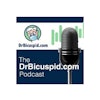
Moderate exercise right before an appointment may help patients with severe dental phobia, a new study has found. Patients who walked at a moderate pace for 30 minutes experienced significantly decreased anxiety before, during, and after dental treatment.
Intense fear keeps many patients from visiting the dentist, and cognitive behavioral therapy, the top recommended treatment option for those with dental phobia, doesn't always work. Therefore, a team of researchers from Germany sought to find out if exercise could help patients combat their severe dental anxiety. Their findings were published in the journal Depression and Anxiety (May 26, 2017).
"The present study provides evidence for an acute effect of moderate-intense aerobic exercise in patients with [dental phobia]," wrote the authors, led by Brigitt Lindenberger and Jens Plaq, MD, from Charité University Medical Center of Berlin. "Compared to a less intensive control condition, treadmill training ... prior to dental treatment led to a significant decrease of phobic fear as well as of [salivary cortisol] before, during, and after dental treatment."
Psychological and physiological effects of exercise
Dental phobia is a relatively common condition that is associated with poor oral health and fewer dental visits. Cognitive behavior therapy is typically the first treatment option for those with dental anxiety, but it does not work for about 30% of patients. Previous research has found that physical exercise can help reduce general anxiety levels and lower physical markers of stress, so the researchers of the current study wanted to see if moderate exercise could help patients with severe dental phobia, too.
They began by recruiting patients from an outpatient psychiatry and psychotherapy clinic in Berlin. To be eligible, patients had to have a high score on the Dental Anxiety Scale and have avoided seeing a dentist for at least three years. Patients were excluded if they had a current psychiatric condition or had a personal or family history of diseases or disorders that could be confounding factors, such as severe sleep illnesses.
“Treadmill training ... prior to dental treatment led to a significant decrease of phobic fear.”
The researchers ended up with 30 patients, who first underwent a test to determine their maximum oxygen consumption, resting salivary cortisol level, and dental anxiety levels. They then split the patients into two groups with 15 people each.
Both groups visited a dental clinic on two separate occasions for a scale and polish treatment. During the first visit, all participants walked on a treadmill at the office for 30 minutes. The first group walked at a low-intensity pace (20% of maximum oxygen consumption), while the second group walked at a moderate-intensity pace (70% of maximum oxygen consumption).
When the patients returned to the clinic seven days later for the second visit, the groups switched, so that those who had been walking at a low-intensity pace instead walked at a moderate-intensity pace and vice versa.
Before, during, and after treatment, patients reported their anxiety levels using a visual analog scale (VAS), which allows patients to indicate their pain level by placing a point on a continuous line. Higher scores mean higher levels of pain. The researchers also collected saliva samples to measure cortisol levels, a sign of stress.
| The effect of exercise on patient anxiety | |||||
| Baseline | Immediately after exercise/before treatment | During treatment | Immediately after treatment | 1 hour after treatment | |
| VAS score with low-intensity exercise | 68.4 | 61 | 71.7 | 41.2 | 15.6 |
| VAS score with moderate-intensity exercise | 70.8 | 44.8 | 54.4 | 20.0 | 10.2 |
| Salivary cortisol (nmol/L) with low-intensity exercise | 2.4 | 2.5 | 2.4 | 2.4 | 2.4 |
| Salivary cortisol (nmol/L) with moderate-intensity exercise | 2.2 | 1.2 | 0.9 | 0.9 | 0.7 |
The group that performed moderate-intensity exercise reported significantly lower anxiety levels before, during, and after treatment than the group that performed low-intensity exercise. In addition, the researchers found significantly lower cortisol levels in the moderate-intensity exercise group.
"In the present study, [moderate-intensity exercise] not only led to a significantly stronger reduction of dental anxiety during the anxiogenic challenge (dental procedure), but also to a decreased fear prior to the stressful situation," the authors wrote. "The additional effect of [moderate-intensity exercise] on anticipatory fear in [dental phobia] is an important clinical finding of the current trial because both aspects of the phobic reaction are important barriers to seek treatment."
Are the findings clinically relevant?
The study had a number of shortcomings, including a small sample size and absence of a control group who did not exercise at all before treatment, according to the authors. The researchers also wanted to use the Dental Anxiety Scale, rather than visual analog scale scores, but chose to use the VAS scale because of time constraints.
However, based on their findings, they concluded that moderate-intensity exercise immediately before dental procedures might be a low-cost adjunctive treatment tool to cognitive behavioral therapy.
The authors hoped future researchers will investigate the mechanisms behind the calming effect of aerobic exercise on dental phobia and also the clinical feasibility of moderate exercise before dental treatment.
"Future research in this field ... may focus on both replicating our results in a larger sample of patients and elucidating possible underlying biological and psychological mechanisms of these findings," they wrote.



















